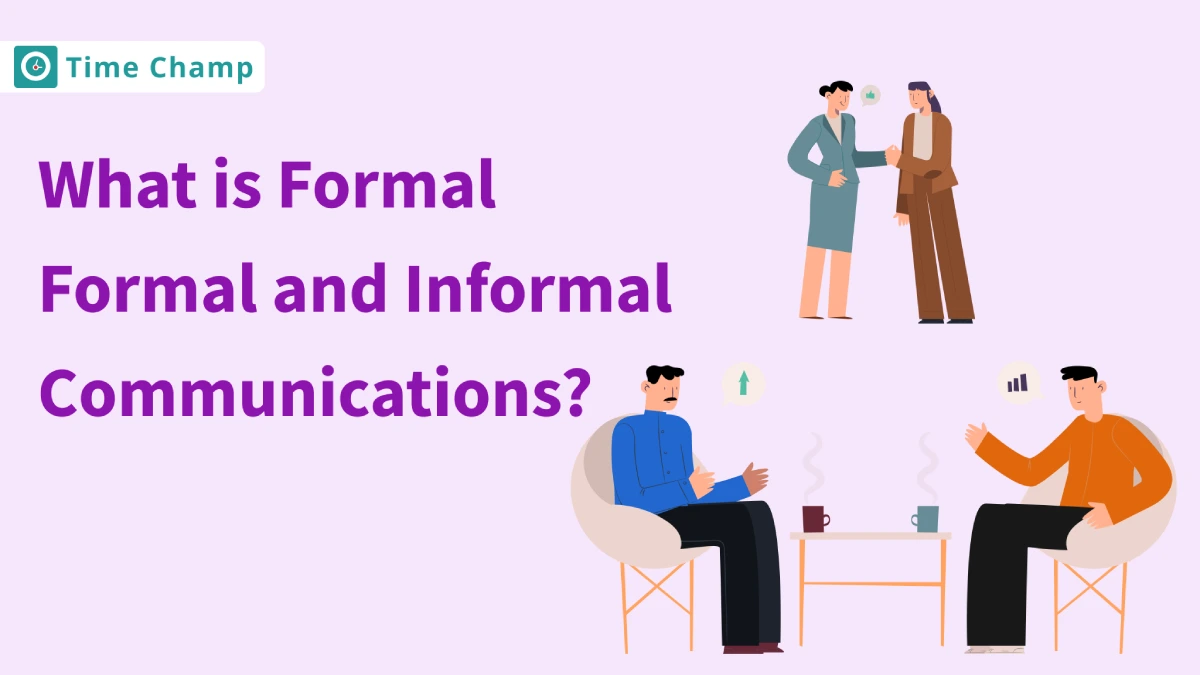What is Formal Communication?
Formal communication is the exchange of information that follows predefined channels, rules, and structures, typically used in professional, organizational, or official settings to ensure clarity, accountability, and record-keeping. Examples include emails, reports, meetings, memos, etc.
What is Informal Communication?
Informal communication is casual, spontaneous, and unstructured interaction that occurs naturally between people, often outside formal channels, through personal conversations, social media, or casual emails.
Formal Communication Vs Informal Communication
| Feature | Formal Communication | Informal Communication |
|---|---|---|
|
Purpose |
Convey official information and directives |
Exchange personal or non-official information |
|
Structure |
Follows a predefined structure and format |
Typically lacks a structured format |
|
Language |
Often uses professional or technical language |
Uses casual language and colloquial expressions |
|
Tone |
Generally serious and professional |
Relaxed and conversational |
|
Channels |
Utilizes formal channels such as memos, emails, meetings, reports, etc. |
Occurs through informal channels such as face-to-face conversations, phone calls, text messages, social media, etc. |
|
Audience |
Typically involves superiors, colleagues, or clients within the organization |
Usually involves friends, family, or coworkers on a personal level |
|
Feedback |
Formal feedback mechanisms are common and expected |
Feedback may be more spontaneous and informal |
|
Documentation |
Often documented for legal or record-keeping purposes |
Documentation is less common and may not be formalized |
|
Decision Making |
May influence organizational decisions and policies |
May impact personal relationships or informal group dynamics |
- Formal communication is professional, official, and follows a clear structure with established channels, while informal communication is spontaneous and casual.
- Formal communication is used for official matters and decision-making, while informal communication fosters social interaction and relationship-building.
- Formal communication has a professional and neutral tone, while informal communication is casual and may include humor.
- Formal communication uses specific, official channels (e.g., emails, and reports), while informal communication flows freely without set guidelines.
- Formal communication is usually written or recorded, whereas informal communication is typically oral or non-verbal.
- Formal communication is time-sensitive with deadlines, whereas informal communication is flexible and not bound by strict timelines.
- Formal communication is detailed and clear, while informal communication is brief and less precise.
- Formal communication targets specific individuals or groups, often those in authority, whereas informal communication can involve anyone, including peers or outsiders.
- Formal communication impacts policies and decisions, while informal communication affects work culture and relationships.
Types of formal communication
1. Written
Communication:
- Memorandum (Memo)
- Reports
- Letters
- Policies and Procedures
2. Verbal Communication:
- Meetings
- Presentations
- Briefings
- Interviews
3. Official Documentation:
- Contracts
- Agendas and Minutes
- Organizational Chart
Types of Informal Communication
- Single strand
- Gossip chain
- Probability chain
- Cluster chain
People also look for
What is Corporate Communication?
What is Grapevine Communication? Types & Examples
Frequently Asked Questions
Informal communication occurs outside official channels, often spontaneously, and can include casual conversations, gossip, or unofficial discussions among colleagues.
Yes, informal communication can sometimes become formal if it is documented or brought into official discussions, meetings, or channels.
Formal communication is required in situations that need documentation, official decisions, regulatory compliance, or structured feedback mechanisms.
Informal communication contributes to the development of an organizational culture by promoting social interactions, team bonding, and a sense of community among employees.







